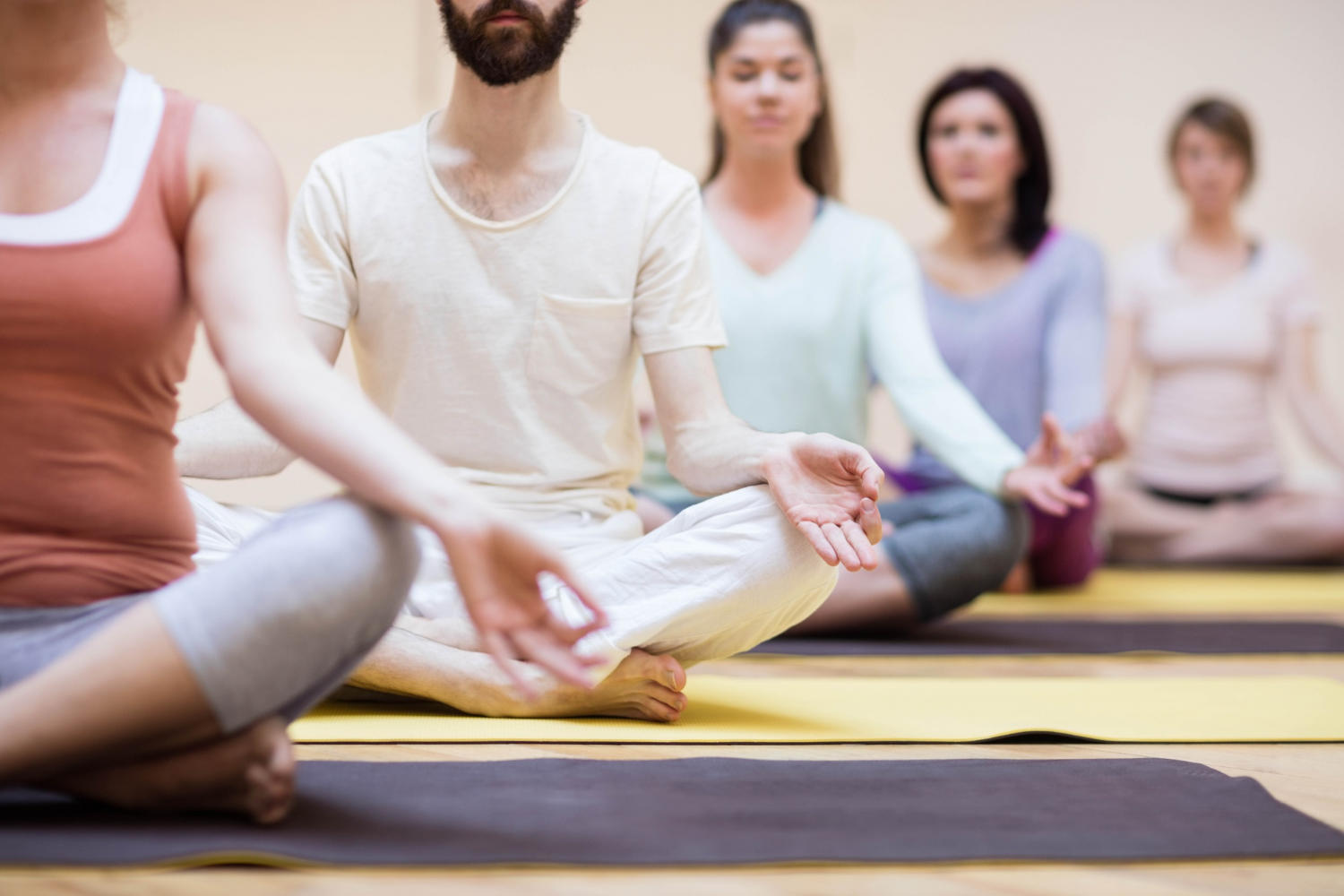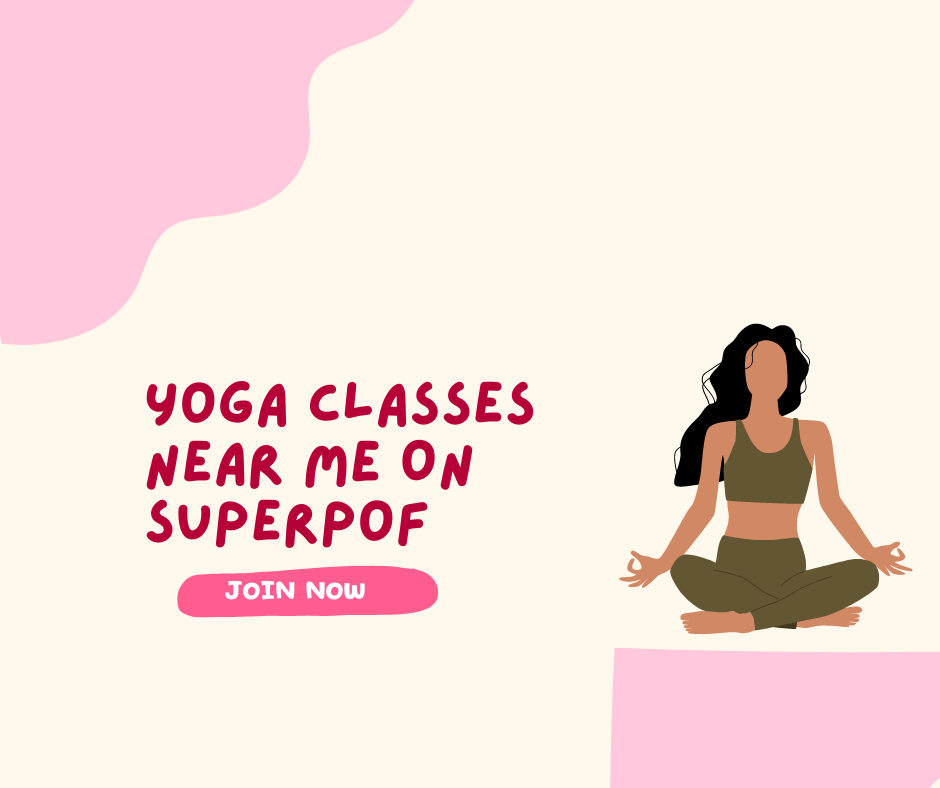Are you a new yogi who dreams of being a yoga instructor one day? Or are you an advanced yogi ready to take the plunge but you need a little encouragement?
Building up your yoga practice and confidence to be able to teach yoga is a great feat! To be a good teacher, you need to ensure that you have done the work to learn how to practice yoga safely, the philosophy behind the practice of yoga, and how to pass on that knowledge to others.
It takes a lot of dedication and exploration to have enough wisdom and experience to be an effective and desirable teacher.
So, how do you become a yoga teacher?
First, look back at your roots and remember everything that brought you to where you are today. Use your experience to host amazing classes!

What Do Your Students Need?
Think back: what did you need when you first started practicing yoga? Aim to provide your students with that.
Before you even start teaching, think about the problems your students may be facing and prepare how you will help solve them. Of course, you cannot fix anyone else’s problems, you can only support them and give them some tools to do it themselves.
By drawing on your own experience, you can use that as your expertise to help keep people from struggling too long in the same ways you did in your yoga path. Think of what hindered you from practicing or learning. How can you be the person who helps remove those barriers for others?
Welcoming Environment
One of the main things that put people off from practicing yoga is the belief that they will not be welcome.
It can be really scary for some people to put themselves out there, especially if they’ve been criticized for their body before. They may believe that a yoga class will not accept them if they aren’t “good enough” at yoga or if they don’t “look like a yogi.” They can believe this even if they’ve never had a negative experience with a yoga class before.
So, do your best to let everyone know that regardless of their appearance, ability, or experience with yoga, they are welcome in your classes. You are kind and accepting, and you want to help people live healthier, more fulfilling lives!
Tough Love
While some people require gentle guidance, others may seek out more strict teachers.
Both approaches are valid, and it depends on your personality and comfort as a teacher. If you are a big softie, a student who requires a drill sergeant for a teacher will probably not match with you. And if you are a more demanding teacher who is quick to point out errors in form without sugarcoating it, then someone who needs a gentle voice will probably not enjoy your classes.
And that’s okay!
Everyone has their own preferences. Remember the phrase, “You can’t be everyone’s cup of tea.” It means that you have your own way of being, and not everyone will like it. Say you’re the most delicious cup of jasmine tea in the entire world; there will still be people who just don’t like jasmine tea.
So whether you want to be a teacher who coaxes people gently or one who is more hands-on and moves people to be the way you want, roll with it and the students who will thrive in your environment will come to you.
Regular Routine
Many people struggle with yoga because it’s tough to add something new to an existing routine.
Help them keep yoga at the forefront of their mind by connecting with them personally, so they remember to come to class or practice on their own more often.
Encourage your students to spend time taking care of their physical, mental, emotional, and spiritual hygiene with yoga!
Not Enough Time in the Day
Another regular excuse is not having enough time.
While it’s true that some people might have a schedule that is just too packed for an hour-long yoga class (plus time before and after for commuting or setting up), most everyone will have some spare moments through the day for a little bit of practice.
Help your students learn how to drop into a meditative state so they can spend a few minutes at lunch or in-between errands tapped in with themselves. Even if they can’t do more than a few mindful stretches, it can really make a difference.
Your aim as a teacher is to prepare students for times when they are out and about in the world, out of in class. Help them learn how to remain calm in the face of stress, know how to move to help their physical body feel well, and know how to help their mental state improve, even if they only have a few minutes to make it happen.

How to Become a Yoga Teacher
Hopeful yoga teachers in India must be certified by the Yoga Certification Board (YCB). They must either attend a YCB-approved institution or prove to a YCB-approved institution that they know enough about yoga to be certified. In the case of the latter, the aspiring yoga teacher must take an exam through a YCB-approved Personnel Certification Body (PrCB) before moving on to the final exam.
Teachers must know the Common Yoga Protocol (CYP) put forward by The Ministry of AYUSH (Ayurveda, Yoga and Naturopathy, Unani, Siddha, and Homoeopathy).
There are different learning requirements for different positions as a yoga instructor, which are:
- Yoga Volunteer
- Yoga Protocol Instructor
- Yoga Wellness Instructor
- Yoga Teacher & Evaluator
- Yoga Master
- Assistant Yoga Therapist
- Yoga Therapist
- Therapeutic Yoga Consultant
You can expect the exam to contain theoretical and practical assessments.
When you pass the exams, you will receive a certificate of approval and an ID card which is valid for 5 years. To renew your certificate, you must attend the Continued Yoga Education Program (CYEP) before your certificate expires.
While the process may seem daunting and it does come with some costs, if you really want to be a professional yoga teacher in India, all the work will be worth it!

How to Create a Yoga Sequence Plan
One of the most important things you’ll need to know how to do as a yoga instructor is to build and teach yoga sequences.
Every teacher develops their own approach over time, but when you’re just starting out, there are some techniques you can use to help develop a lesson.
Build Around a Body Part
One of the easiest ways to build a sequence is to develop a yoga class meant to achieve a specific thing in the body. Want to relieve back pain, revive tired feet, open up the heart, twist the spine, or stretch out the legs? Use this goal as a way to choose which poses you cue and in which order.
Ritual for an Experience
Instead of a body feeling, you can make a class that is designed to encourage the students to feel a spiritual or emotional sensation.
Using your asana, pranayama, speech, music, and ambiance, you really can help transport your students into a different mental space.
Some examples include peace and love, joy, connection with heart, and finding your happy place.
Stories, Chakras, Mantras, and More
Use a central theme to guide your flow. Use a story from yoga’s history, the story behind the name of a pose, chakras, mantras, or other themes from yoga.
If you are focusing on the heart chakra, for instance, you’ll want to build a sequence that includes a lot of backbends, encourages softness, and fosters a connection to the heart.
Research How Poses Flow Together
Once you know what you want your sequence to achieve, start to build a flow that makes sense.
Unless there is a reason your students should be getting up and down a lot, try to group all of the floor movements together and all of the standing postures together.
Remember to have a pose paired with a counterpose, and make sure you get the body warmed up before any big movements.

Training & Teaching Tips for a Beginner Yoga Instructor
As a yoga teacher, it can feel all too easy to slip into a comfort zone and stop learning, developing, and changing.
Here’s how you can ensure you help yourself stay excited by yoga and improve a little bit every day!
Keep Practicing!
Just because you may be teaching several classes a day doesn’t mean you can stop your own yoga practice!
Make sure you set aside time for your own yoga so you can do the yoga you want to do rather than the yoga you teach. Only this way will you be able to explore your own relationship with yoga, get stronger and more flexible, and advance your asana practice. You also need to keep your meditation practice healthy with regular sessions.
Practice on your own or take classes to stay immersed in the yoga world so you can be the best for yourself and your students.
Yoga All Day
When you leave the mat, you are still a yogi.
Practice incorporating the yamas and niyamas into your daily life, not only when you feel like it or when you’re in a yoga class.
It’s not good when you see a pulmonary doctor who smokes, a veterinarian who abuses animals, a chef who never tastes their own food or a yoga teacher who doesn’t conduct their life with the tenets of yoga in mind.
Seek Your Signature Style
Learn how you and your students like your classroom to be prepared. Perhaps you enjoy using incense, candles, sound bowls or other instruments, music, or decorations.
If you are able to control the light and temperature, experiment with those factors as well.
Not all of these things are requirements for a first yoga class, but over time, you’ll learn what to add or subtract. Take classes with other teachers to see what you like or dislike about their signature styles for ideas.
Be Open to Feedback
Ultimately, the people who need to be the most satisfied with your classes are your students. While you should aim to be as authentic as possible, that doesn’t mean that there isn’t room for improvement. Ask your students for feedback on your classes from time to time, listen to them without being defensive, think about what they’ve said, and see if you can integrate it into the way you teach.
Your students aren’t only the people who come to your yoga classes. They can be friends, acquaintances, or strangers. You might have a relationship with them for years and years, or you might only talk to them once and not even learn their name. Every interaction is a chance to clue someone into a way to make their own life better. While you should avoid being preachy or being a know-it-all, approaching every day as a chance to help someone make their life better is a great way to be an amazing yoga teacher.

























